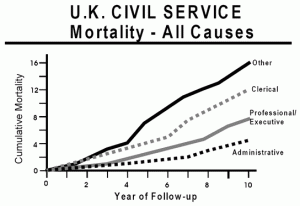The Ethical Principle of Justice:
The concept of justice in bioethics encompasses fairness in treating patients of different population groups; impartiality in providing both healthcare benefits and burdens to people in different communities or social organizations; and the equitable allocation of healthcare financial resources (Feinsod and Wagner). There are many questions that need to be answered in order to clarify the concept of real justice, also referred to as real distributive justice, in the healthcare system. Some of the questions that should be asked are: How can we apply fairness in deciding the kinds of treatment that would be administered? Should decisions be based on the a) need of treatment, b) age of the patients, c) diagnosis of the diseases, d) financial capabilities of individuals? Are these factors sufficient to determine distributive justice in the healthcare system or should there be more topics to consider? The following case will answer the question of whether age must be a basis for allocating healthcare services and administering treatment.
The Case:
An orthopedic surgeon, Dr. Rossi, is a voting member of FutuRx Health Maintenance Organization’s (HMO) committees that underline the services that should be covered or excluded for the various FutuRx HMO plans (Morreim et al.).. In one of the committee meetings there was a discussion about the exclusionary age criteria for arthroplasty replacement. They proposed the age of 90 as a cutoff age for the surgery taking into consideration the median lifespan of the average adult American and the idea that most people will not live long enough after the age of ninety to justify the expenses of the surgery. The cost saving expenses of such surgeries will be reallocated toward lowering the premiums of various health plans and providing more comprehensive coverages for other younger members (Morreim et al.). During this meeting, Dr. Rossi was hesitant to vote for or against this proposal as all what he was thinking of was, Mr. Turner his 91 years old patient.
Mr. Turner, a previous Olympic marathon runner, is in excellent health except for his right knee, which is burdened by severe osteoarthritis preventing him from enjoying and doing the things he love. One year ago, despite his right knee pain, he completed the full marathon in 4 hours and 45 minutes (Morreim et al.). However, currently, he can’t run at all. Mr. Turner is in acute pain that prevent him from enjoying his life. He told Dr. Rossi that running means everything to him and this activity is the source of his enjoyment and content. Dr. Rossi knows that there is no age risk for recommending a knee replacement surgery for him. Dr. Rossi also knows that Mr. Turner will not be affected with these changes as he is not a member of FutuRx HMO plans. All what Dr. Rossi was thinking of was that he doesn’t want to prevent others within the age group of Mr. Turner from doing such surgeries if they were healthy and members of FutuRx HMO plans. However, Dr. Rossi feels great about the re-allocation of the cost saving expenses of such surgeries in lowering the premium and offering more comprehensive coverage for others (Morreim et al.).
Dilemma:
If doctor Rossi votes for the exclusionary age of 90 for such surgeries then his act will conflict with the rule of Beneficence that claims from the doctor to do what is medically righteous and helpful for the patient. His act will also conflict with justice bioethics rule as many patients within the age group of Turner and who are as healthy as Turner do not meet criteria for such procedures if they were members of Futu Health Maintenance Organization (HMO) plans. According to Beauchamp and Childress, “To deny benefits to some when others in the same class receive benefits are unjust, but it is also unjust to deny access to equally needy persons outside the delineated class, such as workers with no health insurance” (251). This made him think of that if he votes in favor of such a plan then he will be helping many other patients who are younger and in need of lowering their premiums and having better comprehensive coverages that promotes better services for their wellbeing and welfare. The question here is, “What alternative provides distributive justice, equality and fairness?” Or should the question be, “What alternative will provide more distributive justice than the other?” We say more distributive justice because both of these alternatives encompass injustice to many patients.
Discussion:
The principle of justice should imply that all the population, without limitation of age, gender, race, financial status, disease treatment and many more must have equal accessibility to healthcare services. “Everyone should be able to live a normal life without dying prematurely or forced to live at a lower quality making the life not worth living” Beauchamp and Childress (259). The above principle of justice together with the principles of beneficence and non-maleficence compel the doctor to do the surgery for Mr. Turner regardless of age, financial status and even if he was a member of Futu HMO plan. However, I also have learned that the allocation of the scarce financial resources must be taken into consideration especially when a surgery on Mr. Turner that improves his quality of life, might deprive another younger patient from a lifesaving procedure. “Distributive justice refers to fair, equitable, and appropriate distribution of benefits and burdens determined by norms that structure the terms of social cooperation” (250).
We cannot deny the fact that in healthcare we have limited financial resources that prevent us from providing many healthcare interventions with credible benefits to everyone regardless of limitations. In economics, we have scarcity of resources (natural resources) that fall short to meet all humans’ needs and force those in charge to decide what to produce and how these resources should be allocated. If in economics, the scarcity of resources will limit the production of what are considered extras to the people’s primary needs, healthcare scarce financial resources will bring about medical restrictions that will affect patients’ life, quality of life, and wellbeing. The questions that should be asked is, “how can we add more money into healthcare system”? President Obama has founded the Affordable Care Act in order to bring about affordable health care costs that will expand health coverage to encompass a larger portion of the population and improve the quality of healthcare services. Under this Act, no one is denied access to medical insurance regardless of age, health, and status (“Patient Protection and Affordable Care Act”). Money is not a limited resource as natural resources and the studies should concentrate on the ways to increase financial resources in the healthcare system, rather than limiting some medical interventions that might be beneficial to those who are denied such an opportunity. Huge budgets and enormous financial resources are allocated for weapons productions and wars, while fewer financial resources and smaller budgets are allocated for healthcare that saves the lives of people.
I can’t deny the fact that age sometimes has to be one of the factors in deciding the allocation of healthcare financial resources considering people have a natural lifespan. However, life expectancy varies not only by different racial groups and gender, but also by different economic and social standards, besides the basic health conditions of different individuals (Morreim et al.). Since everyone is different and since there are many exceptions to any sort of categorization of people, any medical restrictions of age, gender, race, economic standard, even disease diagnoses, will not do justice to all patients in the healthcare system. Hence, the question that should be answered above is, “What alternative will provide more distributive justice than the other?” Though I do believe that everyone must have equal accessibility to healthcare services but, with all the shame, I agree that age restriction alternative will provide more distributive justice but will not provide real justice in the healthcare system.
After being exposed to the current rules of medical practice, I found myself shocked with the reality of medicine nowadays. I previously thought that doctors should only be medical care providers and reservoirs of hope, but I was confronted with the bitter reality that they can participate in life-ending measures by even starving a patient to death in the name of respecting the patient’s autonomy, as in the case of Margret Bentley. I realized that many people justify the legalization of physician assisted suicide (PAS), which visibly conflicts with the Hippocratic Oath, “I will neither give a deadly drug to anybody who asked for it, nor will I make a suggestion to this effect” (“Hippocratic Oath”). I came to realize that the sanctity of human life doesn’t exist because the value of life decreases with disability, illness, age and even financial capability that deprive one from certain medical interventions just because he/she can’t afford it. I understood that doctors are not free to do what they learned to do but rather they should be obliged to listen to the patients’ autonomous decisions and respect their choices even if it conflicts with the rule of beneficence and non-maleficence as Jehovah’s Witness cases and Alzheimer cases. I also was stunned to find myself among very few who do not believe in mercy killing options because according to me no one has the right to take the life of another person. However, this is life and this is the reality of current medicine.
Works Cited
Beauchamp, Tom L., and James F. Childress. “Justice.” Principles of Biomedical Ethics. New York, NY: Oxford UP, 2001. 249-67. Print.
Feinsod, Fred M., and Cathy Wagner. “The Ethical Principle of Justice: The Purveyor of Equality.” Annals of Long Term Care. HMP Communications, 5 Sept. 2008. Web. 03 Apr. 2015.
“Hippocratic Oath.” MedicineNet. N.p., n.d. Web. 03 Apr. 2015.
Morreim, Haavi, Ryan M. Antiel, David G. Zacharias, and Daniel E. Hall. “AMA Journal of Ethics.” Should Age Be a Basis for Rationing Health Care? American Medical Association, May 2014. Web. 03 Apr. 2015.
“Patient Protection and Affordable Care Act.” Wikipedia. Wikimedia Foundation, n.d. Web. 04 Apr. 2015. <http://en.wikipedia.org/wiki/Patient_Protection_and_Affordable_Care_Act>.


 Dilemma:
Dilemma: